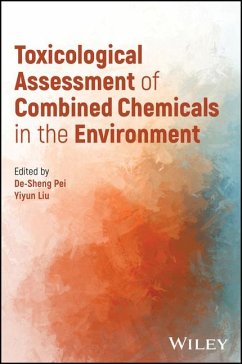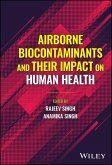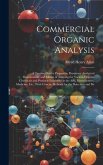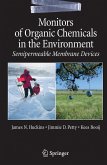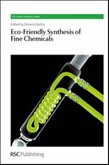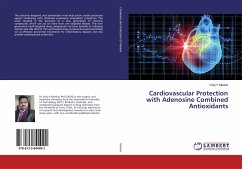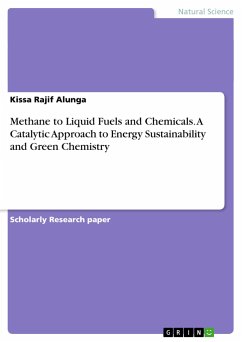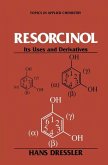Pei
Toxicological Assessment of Combined Chemicals in the Environment
Herausgeber: Pei, De-Sheng; Liu, Yiyun
Pei
Toxicological Assessment of Combined Chemicals in the Environment
Herausgeber: Pei, De-Sheng; Liu, Yiyun
- Gebundenes Buch
- Merkliste
- Auf die Merkliste
- Bewerten Bewerten
- Teilen
- Produkt teilen
- Produkterinnerung
- Produkterinnerung
Comprehensive resource covering toxicology fundamentals, distribution of pollutants in the environment, and research methodologies for toxicological assessment of chemical mixtures Toxicological Assessment of Combined Chemicals in the Environment offers an in-depth exploration of various approaches and molecular mechanisms regarding how minor alterations in chemical mixtures can influence an organism's toxicity, along with discussion of the challenges associated with assessing mixtures. The first section of the book provides a concise introduction to the background and significance of combined…mehr
Andere Kunden interessierten sich auch für
![Airborne Biocontaminants and Their Impact on Human Health Airborne Biocontaminants and Their Impact on Human Health]() SinghAirborne Biocontaminants and Their Impact on Human Health183,99 €
SinghAirborne Biocontaminants and Their Impact on Human Health183,99 €![Commercial Organic Analysis: A Treatise On the Properties, Proximate Analytical Examination, and Modes of Assaying the Various Organic Chemicals an Commercial Organic Analysis: A Treatise On the Properties, Proximate Analytical Examination, and Modes of Assaying the Various Organic Chemicals an]() Alfred Henry AllenCommercial Organic Analysis: A Treatise On the Properties, Proximate Analytical Examination, and Modes of Assaying the Various Organic Chemicals an37,99 €
Alfred Henry AllenCommercial Organic Analysis: A Treatise On the Properties, Proximate Analytical Examination, and Modes of Assaying the Various Organic Chemicals an37,99 €![Monitors of Organic Chemicals in the Environment Monitors of Organic Chemicals in the Environment]() James N. HuckinsMonitors of Organic Chemicals in the Environment103,99 €
James N. HuckinsMonitors of Organic Chemicals in the Environment103,99 €![Eco-Friendly Synthesis of Fine Chemicals Eco-Friendly Synthesis of Fine Chemicals]() Eco-Friendly Synthesis of Fine Chemicals165,99 €
Eco-Friendly Synthesis of Fine Chemicals165,99 €![Cardiovascular Protection with Adenosine Combined Antioxidants Cardiovascular Protection with Adenosine Combined Antioxidants]() Viraj H. MankarCardiovascular Protection with Adenosine Combined Antioxidants53,99 €
Viraj H. MankarCardiovascular Protection with Adenosine Combined Antioxidants53,99 €![Methane to Liquid Fuels and Chemicals. A Catalytic Approach to Energy Sustainability and Green Chemistry Methane to Liquid Fuels and Chemicals. A Catalytic Approach to Energy Sustainability and Green Chemistry]() Kissa Rajif AlungaMethane to Liquid Fuels and Chemicals. A Catalytic Approach to Energy Sustainability and Green Chemistry17,95 €
Kissa Rajif AlungaMethane to Liquid Fuels and Chemicals. A Catalytic Approach to Energy Sustainability and Green Chemistry17,95 €![Resorcinol Resorcinol]() Hans DresslerResorcinol153,99 €
Hans DresslerResorcinol153,99 €-
-
-
Comprehensive resource covering toxicology fundamentals, distribution of pollutants in the environment, and research methodologies for toxicological assessment of chemical mixtures Toxicological Assessment of Combined Chemicals in the Environment offers an in-depth exploration of various approaches and molecular mechanisms regarding how minor alterations in chemical mixtures can influence an organism's toxicity, along with discussion of the challenges associated with assessing mixtures. The first section of the book provides a concise introduction to the background and significance of combined toxicity. Section two delves into the primary sources and enrichment mechanisms of different chemical mixtures, elucidating the biological exposure pathways of these compounds. Section three introduces both classical and emerging toxicological research models in detail. Building on the descriptions of compound emission, migration, accumulation, and transformation processes, and the analysis of combined molecular toxicity in the preceding sections, section four introduces computer mathematical modeling methods for hazard assessment of compound mixtures. The final section details the challenges and future trends in this field. Written by a highly qualified author and seasoned research contributor in the field, Toxicological Assessment of Combined Chemicals in the Environment covers sample topics including: * The degradation, oxidation, absorption, distribution, biotransformation, and excretion of various compounds in both the environment and in organisms * A variety of cell models and in vivo research models of model organisms, supplemented with case studies * Combined molecular toxicity mechanisms of heavy metals, pesticides, persistent organic pollutants (POPs), and pharmaceutical and personal care products (PPCPs) * Principal sources, fate, and mechanism of chemical mixtures in the environment, as well as experimental designs and sampling strategies for combined toxicity studies based on concentrations Toxicological Assessment of Combined Chemicals in the Environment serves as a valuable reference for researchers, students, and policymakers involved in environmental management and protection. It is particularly relevant for toxicologists, risk assessors, and those engaged in the molecular modeling of toxic mixtures.
Produktdetails
- Produktdetails
- Verlag: Wiley
- Seitenzahl: 416
- Erscheinungstermin: 5. Februar 2025
- Englisch
- Abmessung: 279mm x 216mm x 24mm
- Gewicht: 1238g
- ISBN-13: 9781394158324
- ISBN-10: 1394158327
- Artikelnr.: 69971745
- Herstellerkennzeichnung
- Libri GmbH
- Europaallee 1
- 36244 Bad Hersfeld
- gpsr@libri.de
- Verlag: Wiley
- Seitenzahl: 416
- Erscheinungstermin: 5. Februar 2025
- Englisch
- Abmessung: 279mm x 216mm x 24mm
- Gewicht: 1238g
- ISBN-13: 9781394158324
- ISBN-10: 1394158327
- Artikelnr.: 69971745
- Herstellerkennzeichnung
- Libri GmbH
- Europaallee 1
- 36244 Bad Hersfeld
- gpsr@libri.de
De-Sheng Pei, PhD, Professor & Doctoral Supervisor, School of Public Health, Chongqing Medical University. He is currently engaged in research on animal disease models, germ-free fish models, toxicological effects of environmental pollutants, and molecular mechanisms of disease caused by environmental pollutants. His discoveries have been published in more than 180 research papers. Yiyun Liu, PhD, School of Public Health, Chongqing Medical University. In 2022, Dr. Liu graduated from the Research Center for Eco-Environmental Science (RCEES), Chinese Academy of Sciences.
Foreword xiii
Preface xv
Acknowledgments xvii
List of Contributors xix
1 Introduction to Combined Toxicology, Background, Key Terminologies, and
Significance 1
Yingjie Xia
1.1 Introduction 1
1.2 Key Terminologies 5
1.3 Significance 7
2 Toxicokinetics of Chemical Mixture Exposure in the Environment 13
Abdul Wahab Hussain, Mehvish Mumtaz, Asad Ullah Saeed, Maryam Mumtaz
2.1 Unveiling Toxicokinetics 13
2.2 Toxicokinetics and Chemical Mixture Assessment 13
2.3 List of Toxic Chemicals/Pollutants Present in the Environment 15
2.4 Toxicokinetics of Selected Organohalide Compounds/Mixtures 16
2.5 Conclusions 24
3 Toxicodynamics of Chemical Mixtures Exposure in the Organism Body 29
Chunjiao Lu, Ting Yang, Xin Meng, Xiaojun Yang
3.1 Chemical Mixtures in Environment 29
3.2 Model Organism in Toxicology 32
3.3 Toxicodynamics of Chemical Mixtures 35
3.4 Conclusions 39
4 Principal Sources, Fate, and Mechanism of Chemical Mixtures in the
Environment 47
Bao-Fu Zhang, Yiyun Liu, De-Sheng Pei
4.1 Introduction 47
4.2 MP Mixtures 47
4.3 Pesticide Mixtures 49
4.4 HM and Metalloid Metal Mixtures 50
4.5 Nanoparticle Mixtures 51
4.6 Persistent Organic Pollutants 51
4.7 Antibiotic Mixtures 52
4.8 Conclusions 53
5 Experimental Designs and Sampling Strategies for Combined Toxicity
Studies Based on Concentrations 61
Manoharan Saravanan, Karunanithi Vidhya
5.1 Introduction 61
5.2 Need for Risk Assessment Studies 62
5.3 Risk Assessment of Mixture Toxicity 62
5.4 Experimental Designs and Methodologies for Mixture Toxicity 62
5.5 Concentration of Mixture Substances 64
5.6 Concentration-based Strategy 65
5.7 Ecotoxicity Tests: Acute (Short-term Exposure) and Chronic Test
(Long-term Exposure) 66
5.8 Sampling of Biomarkers 71
5.9 Animal Models for Combined Toxicity 72
5.10 Conclusions 76
6 Migration and Transformation of Chemical Pollutants as Mixtures 83
Xiang Ge, Yingxin Yu
6.1 Introduction 83
6.2 Volatile Organic Compounds 84
6.3 Polybrominated Diphenyl Ethers 85
6.4 Tetrabromobisphenol A and Its Derivatives 87
6.5 Per- and Polyfluoroalkyl Substances 88
6.6 Organophosphorus Flame Retardants 89
6.7 Phthalic Acid Esters 90
6.8 Polycyclic Aromatic Hydrocarbons 91
6.9 Alkylphenols 92
6.10 Methylsiloxanes 93
7 Analytical Techniques Used to Detect Chemical Mixtures in the Environment
103
Thodhal Yoganandham Suman
7.1 Introduction 103
7.2 Navigating the Complexities of Mixture Toxicity: A Persistent Challenge
in Environmental Health 104
7.3 Advancing Environmental Monitoring: Toward a Holistic Understanding of
Chemical Mixtures 104
7.4 Sample Preparation: Enhancing Specificity and Efficiency in Mixture
Analysis 106
7.5 Expanding the Analytical Toolbox: Emerging Extraction Techniques for
Complex Environmental Matrices 107
7.6 Analytical Techniques for Characterizing Organic Pollutants: Advancing
Beyond Traditional Approaches 108
7.7 Outlook: Toward Holistic Environmental Monitoring with Advanced
Analytical Tools 111
8 Common Toxicological Experimental Models 115
Xuan Ma, Dejun Huang
8.1 Male Reproductive Function 115
8.2 Female Reproductive Function 120
9 Combined Molecular Toxicity Mechanism of Heavy Metals Mixtures 125
Kusheng Wu, Yuequn Chen, Wenlong Huang
9.1 Introduction: Heavy Metal Exposures Are Everywhere 125
9.2 Combined Molecular Toxicity of Heavy Metal Mixtures in the
Cardiovascular System 125
9.3 Combined Molecular Toxicity of Heavy Metal Mixtures in the Nervous
System 129
9.4 Combined Molecular Toxicity of Heavy Metal Mixtures in the Male
Reproductive System 133
9.5 Combined Molecular Toxicity of Heavy Metal Mixtures in the Female
Reproductive System 135
9.6 Combined Molecular Toxicity of Heavy Metal Mixtures in the Liver 138
9.7 Combined Molecular Toxicity of Heavy Metal Mixtures in the Immune
System 139
9.8 Combined Toxicity of Heavy Metals Mixture in the Regulation of Immune
Mediators 145
9.9 Combined Toxicity of Heavy Metals Mixture in the Immune Response to the
Immunogen 146
9.10 Combined Molecular Toxicity of Heavy Metal Mixtures in the
Tumorigenesis 147
9.11 Combined Molecular Toxicity of Heavy Metal Mixtures in the Orofacial
Clefts 149
9.12 Combined Molecular Toxicity of Heavy Metal Mixtures in the Olfactory
System 152
10 Combined Molecular Toxicity Mechanism of Pesticide Mixtures 173
Ali Omar Jimale, Yiyun Liu, De-Sheng Pei
10.1 Introduction 173
10.2 Epidemiology of Pesticide Pollution 174
10.3 Diseases Caused by Pesticides 174
10.4 The Combined Molecular Toxicity Mechanisms of Pesticide Mixtures 175
10.5 Summary 178
11 Combined Molecular Toxicity Mechanism of Persistent Organic Pollutant
Mixtures 183
Ruijia Zhang, Tiangang Luan
11.1 Introduction 183
11.2 Design of the Components of POP Mixtures and Their Concentrations 184
11.3 Developmental Toxicity of POP Mixtures 189
11.4 Endocrine Effects of POP Mixtures 189
11.5 Molecular Toxicity Mechanisms of POPs 191
11.6 Conclusions 192
12 Combined Molecular Toxicity Mechanism of Emerging Pollutant Mixtures 195
Xiangsheng Hong
12.1 Introduction 195
12.2 ADIs or Reactions of Pharmaceutical Mixtures 197
12.3 Mechanistic Toxicology of PPCP Mixtures 198
12.4 Conclusions and Recommendations for Future Studies 201
13 Combined Molecular Toxicity Mechanism of Phthalate Mixtures 209
Yiyun Liu, De-Sheng Pei
13.1 Human Exposure of Phthalates 209
13.2 PAEs and Diseases 211
13.3 The Toxic Molecular Mechanisms of PAEs Mixture 215
13.4 Conclusion 224
14 Combined Molecular Toxicity Mechanism of Microplastics Mixtures 239
Ya Liu, Yin Liu
14.1 Introduction 239
14.2 Heavy Metals 239
14.3 Persistent Organic Pollutants 241
14.4 Pathogens 243
14.5 Engineered Nanomaterials 244
14.6 Other Contaminants 245
14.7 Conclusion and Prospect 245
15 Combined Molecular Toxicity Mechanism of Flame Retardant Mixtures 249
Xinyan Li, Tiangang Luan
15.1 Introduction 249
15.2 Synergistic Effects of OFR Co-exposure on Oxidative Stress and DNA
Damage 250
15.3 Synergistic Effects of OFR Co-exposure on Endocrine Disruption and
Reproduction Toxicity 257
15.4 Synergistic Effects of OFR Co-exposure on Neurotoxicity 259
15.5 Synergistic Effects of OFR Co-exposure on Immunotoxicity 262
15.6 Synergistic Effects of OFR Co-exposure on Growth, Development, and
Organ 262
15.7 Antagonism Effects of OFR Co-exposure on Growth, Development, and
Organ 266
15.8 Summary and Perspectives 267
16 Adverse Outcome Pathways (AOPs) of Combined Pollutant Mixtures and Their
Toxicogenetic Endpoints 275
Hossam El Din H. Abdelhafez, Mohamed Bedair M. Ahmed, Magdy Moheb El-Dein
Saad
16.1 Introduction 275
16.2 Originated AOP and Approaches of Research in Public Databases 277
16.3 AOP Development Program 278
16.4 Pollutants 282
16.5 Challenges and Future Perspectives 288
16.6 Conclusion 288
17 Mathematical Model for Combined Toxicity Prediction 293
Fasiha Javaid, De-Sheng Pei
17.1 Significance of Predicting Combined Toxicity 293
17.2 Fundamental Concepts of Combined Toxicity 294
17.3 Relevance of Combined Toxicity in Environmental Hazard Evaluation 301
17.4 Mathematical Models for Combined Toxicity Prediction 302
17.5 Evaluation of Model and Selection Criteria 335
17.6 Future Directions and Research Needs 335
17.7 Conclusion 336
18 Novel Quantitative Structure-Activity Relationship Tox21 Techniques for
Combined Toxicity Prediction 343
Na li
18.1 Introduction 343
18.2 Computational Approaches and the Policy 343
18.3 The Methods for QSAR Models 344
18.4 Tox21 and ToxCast 344
18.5 The Cases of QSAR Studies for Prediction of the Toxicity of Chemical
Mixtures 346
18.6 Future Avenues of Chemical Mixture Toxicity Prediction Research 349
19 Challenges and Prospects in the Application of Experimental, Analytical,
and Predictive Models in Combined Toxicity Assessment 351
Naima Hamid, Qiang Yue, Jun Wang, Muhammad Junaid
19.1 Introduction 351
19.2 Experimental Models 352
19.3 Analytical Methods 355
19.4 Mathematical Models 356
19.5 Challenges and Future Prospects Associated with Combined Toxicity
Assessment 357
19.6 Conclusion 359
20 Future Research Perspectives of Combined Toxicology 365
Tariq Mehmood, Anam Ashraf, Kousar Parveen, Muhammad Azher Hassan, Muhammad
Fahad Sardar, Muhammad Faheem, Licheng Peng, Shakeel Ahmad, Tauseef Ahmad,
Predrag Ili¿
20.1 Introduction 365
20.2 General Terms of TA 366
20.3 Exposure to Combined Chemicals or Mixtures 367
20.4 Risk Exposure Assessment 369
20.5 Limitations in Current Knowledge of Combined Chemical Exposure 372
20.6 Data Limitations 372
20.7 Improvements and Future Perspectives 374
21 Combined Toxicity of Chemicals: Final Thoughts and Concluding Remarks
381
De-Sheng Pei, Marriya Sultan, YiYun Liu
21.1 Summary of Key Findings of This Book 381
21.2 Final Thoughts 381
21.3 Concluding Remarks 382
Index 385
Preface xv
Acknowledgments xvii
List of Contributors xix
1 Introduction to Combined Toxicology, Background, Key Terminologies, and
Significance 1
Yingjie Xia
1.1 Introduction 1
1.2 Key Terminologies 5
1.3 Significance 7
2 Toxicokinetics of Chemical Mixture Exposure in the Environment 13
Abdul Wahab Hussain, Mehvish Mumtaz, Asad Ullah Saeed, Maryam Mumtaz
2.1 Unveiling Toxicokinetics 13
2.2 Toxicokinetics and Chemical Mixture Assessment 13
2.3 List of Toxic Chemicals/Pollutants Present in the Environment 15
2.4 Toxicokinetics of Selected Organohalide Compounds/Mixtures 16
2.5 Conclusions 24
3 Toxicodynamics of Chemical Mixtures Exposure in the Organism Body 29
Chunjiao Lu, Ting Yang, Xin Meng, Xiaojun Yang
3.1 Chemical Mixtures in Environment 29
3.2 Model Organism in Toxicology 32
3.3 Toxicodynamics of Chemical Mixtures 35
3.4 Conclusions 39
4 Principal Sources, Fate, and Mechanism of Chemical Mixtures in the
Environment 47
Bao-Fu Zhang, Yiyun Liu, De-Sheng Pei
4.1 Introduction 47
4.2 MP Mixtures 47
4.3 Pesticide Mixtures 49
4.4 HM and Metalloid Metal Mixtures 50
4.5 Nanoparticle Mixtures 51
4.6 Persistent Organic Pollutants 51
4.7 Antibiotic Mixtures 52
4.8 Conclusions 53
5 Experimental Designs and Sampling Strategies for Combined Toxicity
Studies Based on Concentrations 61
Manoharan Saravanan, Karunanithi Vidhya
5.1 Introduction 61
5.2 Need for Risk Assessment Studies 62
5.3 Risk Assessment of Mixture Toxicity 62
5.4 Experimental Designs and Methodologies for Mixture Toxicity 62
5.5 Concentration of Mixture Substances 64
5.6 Concentration-based Strategy 65
5.7 Ecotoxicity Tests: Acute (Short-term Exposure) and Chronic Test
(Long-term Exposure) 66
5.8 Sampling of Biomarkers 71
5.9 Animal Models for Combined Toxicity 72
5.10 Conclusions 76
6 Migration and Transformation of Chemical Pollutants as Mixtures 83
Xiang Ge, Yingxin Yu
6.1 Introduction 83
6.2 Volatile Organic Compounds 84
6.3 Polybrominated Diphenyl Ethers 85
6.4 Tetrabromobisphenol A and Its Derivatives 87
6.5 Per- and Polyfluoroalkyl Substances 88
6.6 Organophosphorus Flame Retardants 89
6.7 Phthalic Acid Esters 90
6.8 Polycyclic Aromatic Hydrocarbons 91
6.9 Alkylphenols 92
6.10 Methylsiloxanes 93
7 Analytical Techniques Used to Detect Chemical Mixtures in the Environment
103
Thodhal Yoganandham Suman
7.1 Introduction 103
7.2 Navigating the Complexities of Mixture Toxicity: A Persistent Challenge
in Environmental Health 104
7.3 Advancing Environmental Monitoring: Toward a Holistic Understanding of
Chemical Mixtures 104
7.4 Sample Preparation: Enhancing Specificity and Efficiency in Mixture
Analysis 106
7.5 Expanding the Analytical Toolbox: Emerging Extraction Techniques for
Complex Environmental Matrices 107
7.6 Analytical Techniques for Characterizing Organic Pollutants: Advancing
Beyond Traditional Approaches 108
7.7 Outlook: Toward Holistic Environmental Monitoring with Advanced
Analytical Tools 111
8 Common Toxicological Experimental Models 115
Xuan Ma, Dejun Huang
8.1 Male Reproductive Function 115
8.2 Female Reproductive Function 120
9 Combined Molecular Toxicity Mechanism of Heavy Metals Mixtures 125
Kusheng Wu, Yuequn Chen, Wenlong Huang
9.1 Introduction: Heavy Metal Exposures Are Everywhere 125
9.2 Combined Molecular Toxicity of Heavy Metal Mixtures in the
Cardiovascular System 125
9.3 Combined Molecular Toxicity of Heavy Metal Mixtures in the Nervous
System 129
9.4 Combined Molecular Toxicity of Heavy Metal Mixtures in the Male
Reproductive System 133
9.5 Combined Molecular Toxicity of Heavy Metal Mixtures in the Female
Reproductive System 135
9.6 Combined Molecular Toxicity of Heavy Metal Mixtures in the Liver 138
9.7 Combined Molecular Toxicity of Heavy Metal Mixtures in the Immune
System 139
9.8 Combined Toxicity of Heavy Metals Mixture in the Regulation of Immune
Mediators 145
9.9 Combined Toxicity of Heavy Metals Mixture in the Immune Response to the
Immunogen 146
9.10 Combined Molecular Toxicity of Heavy Metal Mixtures in the
Tumorigenesis 147
9.11 Combined Molecular Toxicity of Heavy Metal Mixtures in the Orofacial
Clefts 149
9.12 Combined Molecular Toxicity of Heavy Metal Mixtures in the Olfactory
System 152
10 Combined Molecular Toxicity Mechanism of Pesticide Mixtures 173
Ali Omar Jimale, Yiyun Liu, De-Sheng Pei
10.1 Introduction 173
10.2 Epidemiology of Pesticide Pollution 174
10.3 Diseases Caused by Pesticides 174
10.4 The Combined Molecular Toxicity Mechanisms of Pesticide Mixtures 175
10.5 Summary 178
11 Combined Molecular Toxicity Mechanism of Persistent Organic Pollutant
Mixtures 183
Ruijia Zhang, Tiangang Luan
11.1 Introduction 183
11.2 Design of the Components of POP Mixtures and Their Concentrations 184
11.3 Developmental Toxicity of POP Mixtures 189
11.4 Endocrine Effects of POP Mixtures 189
11.5 Molecular Toxicity Mechanisms of POPs 191
11.6 Conclusions 192
12 Combined Molecular Toxicity Mechanism of Emerging Pollutant Mixtures 195
Xiangsheng Hong
12.1 Introduction 195
12.2 ADIs or Reactions of Pharmaceutical Mixtures 197
12.3 Mechanistic Toxicology of PPCP Mixtures 198
12.4 Conclusions and Recommendations for Future Studies 201
13 Combined Molecular Toxicity Mechanism of Phthalate Mixtures 209
Yiyun Liu, De-Sheng Pei
13.1 Human Exposure of Phthalates 209
13.2 PAEs and Diseases 211
13.3 The Toxic Molecular Mechanisms of PAEs Mixture 215
13.4 Conclusion 224
14 Combined Molecular Toxicity Mechanism of Microplastics Mixtures 239
Ya Liu, Yin Liu
14.1 Introduction 239
14.2 Heavy Metals 239
14.3 Persistent Organic Pollutants 241
14.4 Pathogens 243
14.5 Engineered Nanomaterials 244
14.6 Other Contaminants 245
14.7 Conclusion and Prospect 245
15 Combined Molecular Toxicity Mechanism of Flame Retardant Mixtures 249
Xinyan Li, Tiangang Luan
15.1 Introduction 249
15.2 Synergistic Effects of OFR Co-exposure on Oxidative Stress and DNA
Damage 250
15.3 Synergistic Effects of OFR Co-exposure on Endocrine Disruption and
Reproduction Toxicity 257
15.4 Synergistic Effects of OFR Co-exposure on Neurotoxicity 259
15.5 Synergistic Effects of OFR Co-exposure on Immunotoxicity 262
15.6 Synergistic Effects of OFR Co-exposure on Growth, Development, and
Organ 262
15.7 Antagonism Effects of OFR Co-exposure on Growth, Development, and
Organ 266
15.8 Summary and Perspectives 267
16 Adverse Outcome Pathways (AOPs) of Combined Pollutant Mixtures and Their
Toxicogenetic Endpoints 275
Hossam El Din H. Abdelhafez, Mohamed Bedair M. Ahmed, Magdy Moheb El-Dein
Saad
16.1 Introduction 275
16.2 Originated AOP and Approaches of Research in Public Databases 277
16.3 AOP Development Program 278
16.4 Pollutants 282
16.5 Challenges and Future Perspectives 288
16.6 Conclusion 288
17 Mathematical Model for Combined Toxicity Prediction 293
Fasiha Javaid, De-Sheng Pei
17.1 Significance of Predicting Combined Toxicity 293
17.2 Fundamental Concepts of Combined Toxicity 294
17.3 Relevance of Combined Toxicity in Environmental Hazard Evaluation 301
17.4 Mathematical Models for Combined Toxicity Prediction 302
17.5 Evaluation of Model and Selection Criteria 335
17.6 Future Directions and Research Needs 335
17.7 Conclusion 336
18 Novel Quantitative Structure-Activity Relationship Tox21 Techniques for
Combined Toxicity Prediction 343
Na li
18.1 Introduction 343
18.2 Computational Approaches and the Policy 343
18.3 The Methods for QSAR Models 344
18.4 Tox21 and ToxCast 344
18.5 The Cases of QSAR Studies for Prediction of the Toxicity of Chemical
Mixtures 346
18.6 Future Avenues of Chemical Mixture Toxicity Prediction Research 349
19 Challenges and Prospects in the Application of Experimental, Analytical,
and Predictive Models in Combined Toxicity Assessment 351
Naima Hamid, Qiang Yue, Jun Wang, Muhammad Junaid
19.1 Introduction 351
19.2 Experimental Models 352
19.3 Analytical Methods 355
19.4 Mathematical Models 356
19.5 Challenges and Future Prospects Associated with Combined Toxicity
Assessment 357
19.6 Conclusion 359
20 Future Research Perspectives of Combined Toxicology 365
Tariq Mehmood, Anam Ashraf, Kousar Parveen, Muhammad Azher Hassan, Muhammad
Fahad Sardar, Muhammad Faheem, Licheng Peng, Shakeel Ahmad, Tauseef Ahmad,
Predrag Ili¿
20.1 Introduction 365
20.2 General Terms of TA 366
20.3 Exposure to Combined Chemicals or Mixtures 367
20.4 Risk Exposure Assessment 369
20.5 Limitations in Current Knowledge of Combined Chemical Exposure 372
20.6 Data Limitations 372
20.7 Improvements and Future Perspectives 374
21 Combined Toxicity of Chemicals: Final Thoughts and Concluding Remarks
381
De-Sheng Pei, Marriya Sultan, YiYun Liu
21.1 Summary of Key Findings of This Book 381
21.2 Final Thoughts 381
21.3 Concluding Remarks 382
Index 385
Foreword xiii
Preface xv
Acknowledgments xvii
List of Contributors xix
1 Introduction to Combined Toxicology, Background, Key Terminologies, and
Significance 1
Yingjie Xia
1.1 Introduction 1
1.2 Key Terminologies 5
1.3 Significance 7
2 Toxicokinetics of Chemical Mixture Exposure in the Environment 13
Abdul Wahab Hussain, Mehvish Mumtaz, Asad Ullah Saeed, Maryam Mumtaz
2.1 Unveiling Toxicokinetics 13
2.2 Toxicokinetics and Chemical Mixture Assessment 13
2.3 List of Toxic Chemicals/Pollutants Present in the Environment 15
2.4 Toxicokinetics of Selected Organohalide Compounds/Mixtures 16
2.5 Conclusions 24
3 Toxicodynamics of Chemical Mixtures Exposure in the Organism Body 29
Chunjiao Lu, Ting Yang, Xin Meng, Xiaojun Yang
3.1 Chemical Mixtures in Environment 29
3.2 Model Organism in Toxicology 32
3.3 Toxicodynamics of Chemical Mixtures 35
3.4 Conclusions 39
4 Principal Sources, Fate, and Mechanism of Chemical Mixtures in the
Environment 47
Bao-Fu Zhang, Yiyun Liu, De-Sheng Pei
4.1 Introduction 47
4.2 MP Mixtures 47
4.3 Pesticide Mixtures 49
4.4 HM and Metalloid Metal Mixtures 50
4.5 Nanoparticle Mixtures 51
4.6 Persistent Organic Pollutants 51
4.7 Antibiotic Mixtures 52
4.8 Conclusions 53
5 Experimental Designs and Sampling Strategies for Combined Toxicity
Studies Based on Concentrations 61
Manoharan Saravanan, Karunanithi Vidhya
5.1 Introduction 61
5.2 Need for Risk Assessment Studies 62
5.3 Risk Assessment of Mixture Toxicity 62
5.4 Experimental Designs and Methodologies for Mixture Toxicity 62
5.5 Concentration of Mixture Substances 64
5.6 Concentration-based Strategy 65
5.7 Ecotoxicity Tests: Acute (Short-term Exposure) and Chronic Test
(Long-term Exposure) 66
5.8 Sampling of Biomarkers 71
5.9 Animal Models for Combined Toxicity 72
5.10 Conclusions 76
6 Migration and Transformation of Chemical Pollutants as Mixtures 83
Xiang Ge, Yingxin Yu
6.1 Introduction 83
6.2 Volatile Organic Compounds 84
6.3 Polybrominated Diphenyl Ethers 85
6.4 Tetrabromobisphenol A and Its Derivatives 87
6.5 Per- and Polyfluoroalkyl Substances 88
6.6 Organophosphorus Flame Retardants 89
6.7 Phthalic Acid Esters 90
6.8 Polycyclic Aromatic Hydrocarbons 91
6.9 Alkylphenols 92
6.10 Methylsiloxanes 93
7 Analytical Techniques Used to Detect Chemical Mixtures in the Environment
103
Thodhal Yoganandham Suman
7.1 Introduction 103
7.2 Navigating the Complexities of Mixture Toxicity: A Persistent Challenge
in Environmental Health 104
7.3 Advancing Environmental Monitoring: Toward a Holistic Understanding of
Chemical Mixtures 104
7.4 Sample Preparation: Enhancing Specificity and Efficiency in Mixture
Analysis 106
7.5 Expanding the Analytical Toolbox: Emerging Extraction Techniques for
Complex Environmental Matrices 107
7.6 Analytical Techniques for Characterizing Organic Pollutants: Advancing
Beyond Traditional Approaches 108
7.7 Outlook: Toward Holistic Environmental Monitoring with Advanced
Analytical Tools 111
8 Common Toxicological Experimental Models 115
Xuan Ma, Dejun Huang
8.1 Male Reproductive Function 115
8.2 Female Reproductive Function 120
9 Combined Molecular Toxicity Mechanism of Heavy Metals Mixtures 125
Kusheng Wu, Yuequn Chen, Wenlong Huang
9.1 Introduction: Heavy Metal Exposures Are Everywhere 125
9.2 Combined Molecular Toxicity of Heavy Metal Mixtures in the
Cardiovascular System 125
9.3 Combined Molecular Toxicity of Heavy Metal Mixtures in the Nervous
System 129
9.4 Combined Molecular Toxicity of Heavy Metal Mixtures in the Male
Reproductive System 133
9.5 Combined Molecular Toxicity of Heavy Metal Mixtures in the Female
Reproductive System 135
9.6 Combined Molecular Toxicity of Heavy Metal Mixtures in the Liver 138
9.7 Combined Molecular Toxicity of Heavy Metal Mixtures in the Immune
System 139
9.8 Combined Toxicity of Heavy Metals Mixture in the Regulation of Immune
Mediators 145
9.9 Combined Toxicity of Heavy Metals Mixture in the Immune Response to the
Immunogen 146
9.10 Combined Molecular Toxicity of Heavy Metal Mixtures in the
Tumorigenesis 147
9.11 Combined Molecular Toxicity of Heavy Metal Mixtures in the Orofacial
Clefts 149
9.12 Combined Molecular Toxicity of Heavy Metal Mixtures in the Olfactory
System 152
10 Combined Molecular Toxicity Mechanism of Pesticide Mixtures 173
Ali Omar Jimale, Yiyun Liu, De-Sheng Pei
10.1 Introduction 173
10.2 Epidemiology of Pesticide Pollution 174
10.3 Diseases Caused by Pesticides 174
10.4 The Combined Molecular Toxicity Mechanisms of Pesticide Mixtures 175
10.5 Summary 178
11 Combined Molecular Toxicity Mechanism of Persistent Organic Pollutant
Mixtures 183
Ruijia Zhang, Tiangang Luan
11.1 Introduction 183
11.2 Design of the Components of POP Mixtures and Their Concentrations 184
11.3 Developmental Toxicity of POP Mixtures 189
11.4 Endocrine Effects of POP Mixtures 189
11.5 Molecular Toxicity Mechanisms of POPs 191
11.6 Conclusions 192
12 Combined Molecular Toxicity Mechanism of Emerging Pollutant Mixtures 195
Xiangsheng Hong
12.1 Introduction 195
12.2 ADIs or Reactions of Pharmaceutical Mixtures 197
12.3 Mechanistic Toxicology of PPCP Mixtures 198
12.4 Conclusions and Recommendations for Future Studies 201
13 Combined Molecular Toxicity Mechanism of Phthalate Mixtures 209
Yiyun Liu, De-Sheng Pei
13.1 Human Exposure of Phthalates 209
13.2 PAEs and Diseases 211
13.3 The Toxic Molecular Mechanisms of PAEs Mixture 215
13.4 Conclusion 224
14 Combined Molecular Toxicity Mechanism of Microplastics Mixtures 239
Ya Liu, Yin Liu
14.1 Introduction 239
14.2 Heavy Metals 239
14.3 Persistent Organic Pollutants 241
14.4 Pathogens 243
14.5 Engineered Nanomaterials 244
14.6 Other Contaminants 245
14.7 Conclusion and Prospect 245
15 Combined Molecular Toxicity Mechanism of Flame Retardant Mixtures 249
Xinyan Li, Tiangang Luan
15.1 Introduction 249
15.2 Synergistic Effects of OFR Co-exposure on Oxidative Stress and DNA
Damage 250
15.3 Synergistic Effects of OFR Co-exposure on Endocrine Disruption and
Reproduction Toxicity 257
15.4 Synergistic Effects of OFR Co-exposure on Neurotoxicity 259
15.5 Synergistic Effects of OFR Co-exposure on Immunotoxicity 262
15.6 Synergistic Effects of OFR Co-exposure on Growth, Development, and
Organ 262
15.7 Antagonism Effects of OFR Co-exposure on Growth, Development, and
Organ 266
15.8 Summary and Perspectives 267
16 Adverse Outcome Pathways (AOPs) of Combined Pollutant Mixtures and Their
Toxicogenetic Endpoints 275
Hossam El Din H. Abdelhafez, Mohamed Bedair M. Ahmed, Magdy Moheb El-Dein
Saad
16.1 Introduction 275
16.2 Originated AOP and Approaches of Research in Public Databases 277
16.3 AOP Development Program 278
16.4 Pollutants 282
16.5 Challenges and Future Perspectives 288
16.6 Conclusion 288
17 Mathematical Model for Combined Toxicity Prediction 293
Fasiha Javaid, De-Sheng Pei
17.1 Significance of Predicting Combined Toxicity 293
17.2 Fundamental Concepts of Combined Toxicity 294
17.3 Relevance of Combined Toxicity in Environmental Hazard Evaluation 301
17.4 Mathematical Models for Combined Toxicity Prediction 302
17.5 Evaluation of Model and Selection Criteria 335
17.6 Future Directions and Research Needs 335
17.7 Conclusion 336
18 Novel Quantitative Structure-Activity Relationship Tox21 Techniques for
Combined Toxicity Prediction 343
Na li
18.1 Introduction 343
18.2 Computational Approaches and the Policy 343
18.3 The Methods for QSAR Models 344
18.4 Tox21 and ToxCast 344
18.5 The Cases of QSAR Studies for Prediction of the Toxicity of Chemical
Mixtures 346
18.6 Future Avenues of Chemical Mixture Toxicity Prediction Research 349
19 Challenges and Prospects in the Application of Experimental, Analytical,
and Predictive Models in Combined Toxicity Assessment 351
Naima Hamid, Qiang Yue, Jun Wang, Muhammad Junaid
19.1 Introduction 351
19.2 Experimental Models 352
19.3 Analytical Methods 355
19.4 Mathematical Models 356
19.5 Challenges and Future Prospects Associated with Combined Toxicity
Assessment 357
19.6 Conclusion 359
20 Future Research Perspectives of Combined Toxicology 365
Tariq Mehmood, Anam Ashraf, Kousar Parveen, Muhammad Azher Hassan, Muhammad
Fahad Sardar, Muhammad Faheem, Licheng Peng, Shakeel Ahmad, Tauseef Ahmad,
Predrag Ili¿
20.1 Introduction 365
20.2 General Terms of TA 366
20.3 Exposure to Combined Chemicals or Mixtures 367
20.4 Risk Exposure Assessment 369
20.5 Limitations in Current Knowledge of Combined Chemical Exposure 372
20.6 Data Limitations 372
20.7 Improvements and Future Perspectives 374
21 Combined Toxicity of Chemicals: Final Thoughts and Concluding Remarks
381
De-Sheng Pei, Marriya Sultan, YiYun Liu
21.1 Summary of Key Findings of This Book 381
21.2 Final Thoughts 381
21.3 Concluding Remarks 382
Index 385
Preface xv
Acknowledgments xvii
List of Contributors xix
1 Introduction to Combined Toxicology, Background, Key Terminologies, and
Significance 1
Yingjie Xia
1.1 Introduction 1
1.2 Key Terminologies 5
1.3 Significance 7
2 Toxicokinetics of Chemical Mixture Exposure in the Environment 13
Abdul Wahab Hussain, Mehvish Mumtaz, Asad Ullah Saeed, Maryam Mumtaz
2.1 Unveiling Toxicokinetics 13
2.2 Toxicokinetics and Chemical Mixture Assessment 13
2.3 List of Toxic Chemicals/Pollutants Present in the Environment 15
2.4 Toxicokinetics of Selected Organohalide Compounds/Mixtures 16
2.5 Conclusions 24
3 Toxicodynamics of Chemical Mixtures Exposure in the Organism Body 29
Chunjiao Lu, Ting Yang, Xin Meng, Xiaojun Yang
3.1 Chemical Mixtures in Environment 29
3.2 Model Organism in Toxicology 32
3.3 Toxicodynamics of Chemical Mixtures 35
3.4 Conclusions 39
4 Principal Sources, Fate, and Mechanism of Chemical Mixtures in the
Environment 47
Bao-Fu Zhang, Yiyun Liu, De-Sheng Pei
4.1 Introduction 47
4.2 MP Mixtures 47
4.3 Pesticide Mixtures 49
4.4 HM and Metalloid Metal Mixtures 50
4.5 Nanoparticle Mixtures 51
4.6 Persistent Organic Pollutants 51
4.7 Antibiotic Mixtures 52
4.8 Conclusions 53
5 Experimental Designs and Sampling Strategies for Combined Toxicity
Studies Based on Concentrations 61
Manoharan Saravanan, Karunanithi Vidhya
5.1 Introduction 61
5.2 Need for Risk Assessment Studies 62
5.3 Risk Assessment of Mixture Toxicity 62
5.4 Experimental Designs and Methodologies for Mixture Toxicity 62
5.5 Concentration of Mixture Substances 64
5.6 Concentration-based Strategy 65
5.7 Ecotoxicity Tests: Acute (Short-term Exposure) and Chronic Test
(Long-term Exposure) 66
5.8 Sampling of Biomarkers 71
5.9 Animal Models for Combined Toxicity 72
5.10 Conclusions 76
6 Migration and Transformation of Chemical Pollutants as Mixtures 83
Xiang Ge, Yingxin Yu
6.1 Introduction 83
6.2 Volatile Organic Compounds 84
6.3 Polybrominated Diphenyl Ethers 85
6.4 Tetrabromobisphenol A and Its Derivatives 87
6.5 Per- and Polyfluoroalkyl Substances 88
6.6 Organophosphorus Flame Retardants 89
6.7 Phthalic Acid Esters 90
6.8 Polycyclic Aromatic Hydrocarbons 91
6.9 Alkylphenols 92
6.10 Methylsiloxanes 93
7 Analytical Techniques Used to Detect Chemical Mixtures in the Environment
103
Thodhal Yoganandham Suman
7.1 Introduction 103
7.2 Navigating the Complexities of Mixture Toxicity: A Persistent Challenge
in Environmental Health 104
7.3 Advancing Environmental Monitoring: Toward a Holistic Understanding of
Chemical Mixtures 104
7.4 Sample Preparation: Enhancing Specificity and Efficiency in Mixture
Analysis 106
7.5 Expanding the Analytical Toolbox: Emerging Extraction Techniques for
Complex Environmental Matrices 107
7.6 Analytical Techniques for Characterizing Organic Pollutants: Advancing
Beyond Traditional Approaches 108
7.7 Outlook: Toward Holistic Environmental Monitoring with Advanced
Analytical Tools 111
8 Common Toxicological Experimental Models 115
Xuan Ma, Dejun Huang
8.1 Male Reproductive Function 115
8.2 Female Reproductive Function 120
9 Combined Molecular Toxicity Mechanism of Heavy Metals Mixtures 125
Kusheng Wu, Yuequn Chen, Wenlong Huang
9.1 Introduction: Heavy Metal Exposures Are Everywhere 125
9.2 Combined Molecular Toxicity of Heavy Metal Mixtures in the
Cardiovascular System 125
9.3 Combined Molecular Toxicity of Heavy Metal Mixtures in the Nervous
System 129
9.4 Combined Molecular Toxicity of Heavy Metal Mixtures in the Male
Reproductive System 133
9.5 Combined Molecular Toxicity of Heavy Metal Mixtures in the Female
Reproductive System 135
9.6 Combined Molecular Toxicity of Heavy Metal Mixtures in the Liver 138
9.7 Combined Molecular Toxicity of Heavy Metal Mixtures in the Immune
System 139
9.8 Combined Toxicity of Heavy Metals Mixture in the Regulation of Immune
Mediators 145
9.9 Combined Toxicity of Heavy Metals Mixture in the Immune Response to the
Immunogen 146
9.10 Combined Molecular Toxicity of Heavy Metal Mixtures in the
Tumorigenesis 147
9.11 Combined Molecular Toxicity of Heavy Metal Mixtures in the Orofacial
Clefts 149
9.12 Combined Molecular Toxicity of Heavy Metal Mixtures in the Olfactory
System 152
10 Combined Molecular Toxicity Mechanism of Pesticide Mixtures 173
Ali Omar Jimale, Yiyun Liu, De-Sheng Pei
10.1 Introduction 173
10.2 Epidemiology of Pesticide Pollution 174
10.3 Diseases Caused by Pesticides 174
10.4 The Combined Molecular Toxicity Mechanisms of Pesticide Mixtures 175
10.5 Summary 178
11 Combined Molecular Toxicity Mechanism of Persistent Organic Pollutant
Mixtures 183
Ruijia Zhang, Tiangang Luan
11.1 Introduction 183
11.2 Design of the Components of POP Mixtures and Their Concentrations 184
11.3 Developmental Toxicity of POP Mixtures 189
11.4 Endocrine Effects of POP Mixtures 189
11.5 Molecular Toxicity Mechanisms of POPs 191
11.6 Conclusions 192
12 Combined Molecular Toxicity Mechanism of Emerging Pollutant Mixtures 195
Xiangsheng Hong
12.1 Introduction 195
12.2 ADIs or Reactions of Pharmaceutical Mixtures 197
12.3 Mechanistic Toxicology of PPCP Mixtures 198
12.4 Conclusions and Recommendations for Future Studies 201
13 Combined Molecular Toxicity Mechanism of Phthalate Mixtures 209
Yiyun Liu, De-Sheng Pei
13.1 Human Exposure of Phthalates 209
13.2 PAEs and Diseases 211
13.3 The Toxic Molecular Mechanisms of PAEs Mixture 215
13.4 Conclusion 224
14 Combined Molecular Toxicity Mechanism of Microplastics Mixtures 239
Ya Liu, Yin Liu
14.1 Introduction 239
14.2 Heavy Metals 239
14.3 Persistent Organic Pollutants 241
14.4 Pathogens 243
14.5 Engineered Nanomaterials 244
14.6 Other Contaminants 245
14.7 Conclusion and Prospect 245
15 Combined Molecular Toxicity Mechanism of Flame Retardant Mixtures 249
Xinyan Li, Tiangang Luan
15.1 Introduction 249
15.2 Synergistic Effects of OFR Co-exposure on Oxidative Stress and DNA
Damage 250
15.3 Synergistic Effects of OFR Co-exposure on Endocrine Disruption and
Reproduction Toxicity 257
15.4 Synergistic Effects of OFR Co-exposure on Neurotoxicity 259
15.5 Synergistic Effects of OFR Co-exposure on Immunotoxicity 262
15.6 Synergistic Effects of OFR Co-exposure on Growth, Development, and
Organ 262
15.7 Antagonism Effects of OFR Co-exposure on Growth, Development, and
Organ 266
15.8 Summary and Perspectives 267
16 Adverse Outcome Pathways (AOPs) of Combined Pollutant Mixtures and Their
Toxicogenetic Endpoints 275
Hossam El Din H. Abdelhafez, Mohamed Bedair M. Ahmed, Magdy Moheb El-Dein
Saad
16.1 Introduction 275
16.2 Originated AOP and Approaches of Research in Public Databases 277
16.3 AOP Development Program 278
16.4 Pollutants 282
16.5 Challenges and Future Perspectives 288
16.6 Conclusion 288
17 Mathematical Model for Combined Toxicity Prediction 293
Fasiha Javaid, De-Sheng Pei
17.1 Significance of Predicting Combined Toxicity 293
17.2 Fundamental Concepts of Combined Toxicity 294
17.3 Relevance of Combined Toxicity in Environmental Hazard Evaluation 301
17.4 Mathematical Models for Combined Toxicity Prediction 302
17.5 Evaluation of Model and Selection Criteria 335
17.6 Future Directions and Research Needs 335
17.7 Conclusion 336
18 Novel Quantitative Structure-Activity Relationship Tox21 Techniques for
Combined Toxicity Prediction 343
Na li
18.1 Introduction 343
18.2 Computational Approaches and the Policy 343
18.3 The Methods for QSAR Models 344
18.4 Tox21 and ToxCast 344
18.5 The Cases of QSAR Studies for Prediction of the Toxicity of Chemical
Mixtures 346
18.6 Future Avenues of Chemical Mixture Toxicity Prediction Research 349
19 Challenges and Prospects in the Application of Experimental, Analytical,
and Predictive Models in Combined Toxicity Assessment 351
Naima Hamid, Qiang Yue, Jun Wang, Muhammad Junaid
19.1 Introduction 351
19.2 Experimental Models 352
19.3 Analytical Methods 355
19.4 Mathematical Models 356
19.5 Challenges and Future Prospects Associated with Combined Toxicity
Assessment 357
19.6 Conclusion 359
20 Future Research Perspectives of Combined Toxicology 365
Tariq Mehmood, Anam Ashraf, Kousar Parveen, Muhammad Azher Hassan, Muhammad
Fahad Sardar, Muhammad Faheem, Licheng Peng, Shakeel Ahmad, Tauseef Ahmad,
Predrag Ili¿
20.1 Introduction 365
20.2 General Terms of TA 366
20.3 Exposure to Combined Chemicals or Mixtures 367
20.4 Risk Exposure Assessment 369
20.5 Limitations in Current Knowledge of Combined Chemical Exposure 372
20.6 Data Limitations 372
20.7 Improvements and Future Perspectives 374
21 Combined Toxicity of Chemicals: Final Thoughts and Concluding Remarks
381
De-Sheng Pei, Marriya Sultan, YiYun Liu
21.1 Summary of Key Findings of This Book 381
21.2 Final Thoughts 381
21.3 Concluding Remarks 382
Index 385

